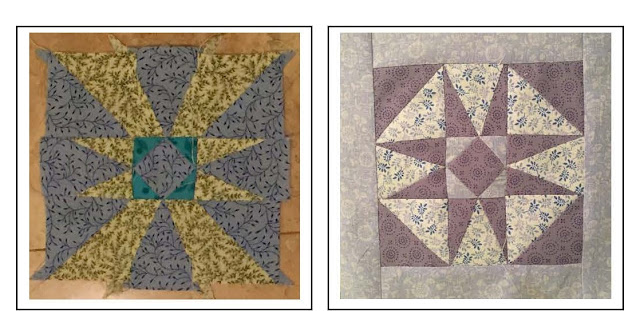These are two squares from my 2016 sampler quilt. The one on the right is the original pattern from Laurie Aaron Hird's, The Farmer's Wife's 1930's Sampler Quilt. On the left you see the result of not paying attention when sewing block units together. They are made up of exactly same units...I just screwed up. I wonder how many new patterns are a result of that kind of mistake.
My last summer reading, Soft Covers for Hard Times by Merikay Waldvogel, gave me even more perspective on quilting history. You see, until the early 1900's quilt patterns were shared within families and communities, friend to friend, quilter to quilter, and even if they thought to name a pattern, the name would have significance to that community or region. In pre-industrialized America, a single piecing pattern could have several names.
Quilt making received a creative boost in the 1920's with the Colonial Revival which brought a renewed interest in "old fashioned" past-times. By the 1930's, textile mass production and mass marketing of patterns in newspapers and magazines, exposed quilters across the country to new trends and quilt patterns. For instance, the pattern known regionally as "Crown of Thorns" or "Rocky Mountain Road" was renamed "New York Beauty" when The Stearns and Foster Company used it on the wrapper of their cotton batting. Though commercialization of patterns meant the loss of regional names, it also increased a pattern's appeal, effectively breaking down regional barriers. (As Waldvogel points out, during the period after the Civil War a southern quilter would never have chosen a quilt with a Yankee name like "New York Beauty".) But this also meant the quilts from that time forward would have a more homogeneous look.
It would be tempting to bemoan the loss of the folk art feel of regional quilting, and the effects of modern life on the medium. But these new conditions also opened up new possibilities and really challenged one to look for new ways to be innovative, fresh, and creative- to bring one's own aesthetics to a favorite activity.
That's what usually happens with changes in society... we adapt.



.jpg)
Comments
Post a Comment